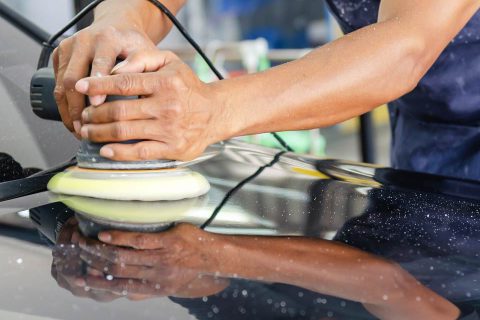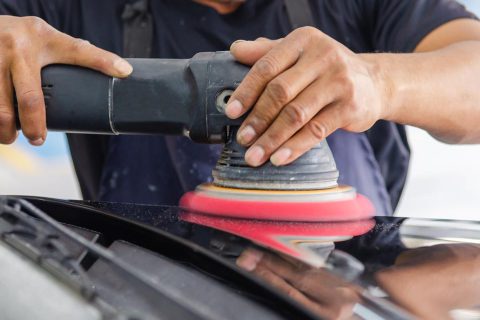Cut and polish
This is a process which consisted of different steps. It is the process for restoring the paintwork. It focuses on removing imperfections and enhancing the shine of your car’s exterior.
Cutting
This involves applying a cutting compound (abrasive paste) and using a polisher or buffer to remove imperfections like:
The “cutting” part essentially abrades a very thin layer of the clear coat to level out the surface and eliminate these imperfections.
Different cutting compounds with varying levels of abrasiveness are used depending on the severity of the imperfections.
Polishing
- After cutting, a finer polishing compound is used to refine the surface and bring out the gloss and shine of the paint.
- This step smooths out any slight marks left by the cutting compound and adds a protective layer for further protection.
- Polishing doesn’t remove any material like cutting does, but rather refines the existing clear coat to create a mirror-like finish.
“Cut and polish” is a common term used in car detailing to describe a two-step process for restoring the paintwork. It focuses on removing imperfections and enhancing the shine of your car’s exterior.
Benefits of Cut and Polish:
- Restores the car’s original shine and depth of colour.
- Removes minor scratches and imperfections, making the paint look smoother.
- Protects the paint from further damage like oxidation and UV rays.
- Increases the value of your car.
Please note –
- Not all imperfections can be completely removed with a cut and polish. Deeper scratches or paint chips may require more extensive paint correction techniques.
- The frequency of cut and polish depends on the car’s condition, driving habits, and environmental factors. Generally, once, or twice a year is recommended.
It’s recommended to be done by a professional car detailer to avoid damaging the paintwork with improper techniques or products. You can trust Team Silverline car detailing because of our Proficiency in detailing techniques.



